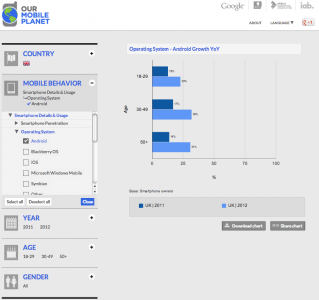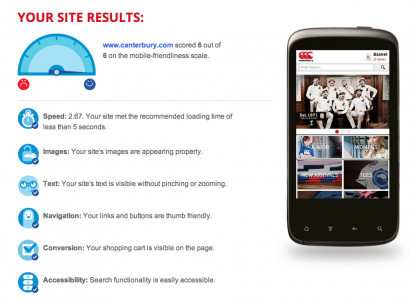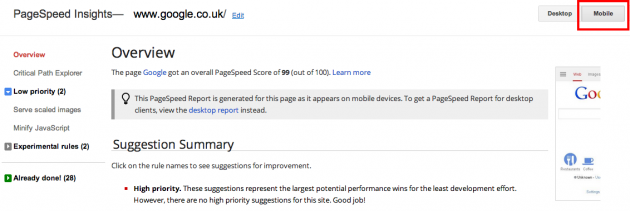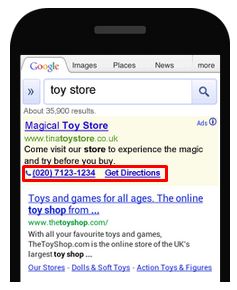2012 was predicted to be a year of continued mobile search growth, and it certainly did not disappoint. With tablet devices hitting the mainstream and smartphones now the norm, catering for these devices has now become standard practise for success online.
Understanding how visitors are using these devices on your site is important, and also how your site is performing in relation to desktop search. You can then look into putting in place a mobile marketing strategy to improve performance.
Luckily, Google provide a whole host of tools that can help you analyse and understand mobile device usage on your website, and ultimately improve performance through this channel.
1 – Our Mobile Planet
This tool allows you to view data about mobile users that Google has gathered. Select your key demographic and other potential customers, and view key differences between 2011 and 2012. This data can form part of your research for your clients. Especially if management buy-in is needed to confirm budgets on a mobile site implementation. This data could also be used in blog posts or infographics.
2. Mobile Meter
There are many tools out there for testing your site, and Google’s mobile meter gives an overview of how your site looks and performs on a mobile. The mobile meter is part of Google’s excellent ‘Mobilize Your Site‘ resource, which has lots of other information on developing mobile sites. The mobile site case studies are certainly worth a read.
3. PageSpeed Insights
The PageSpeed insight tool can test speed from both a desktop and mobile perspective. Very useful to see where the easiest performance improvements can be gained in terms of download speed. As site speed is considered part of Google’s algorithm, fixing issues could result in a real impact on mobile search positions.
4. Google AdWords Keyword Tool
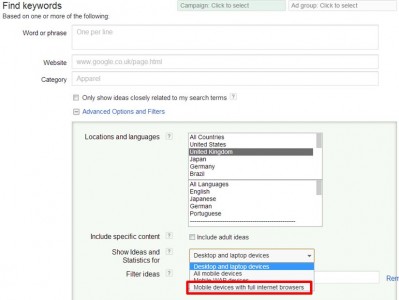
The Google keyword tool gives a guideline on the monthly volume in searches. As well as looking at desktop searches, the tool can also show data for searches on mobile devices.
Simply select ‘advanced options’ > ‘show ideas and statistics for’ > and select ‘mobile’.
Local search trends can be added to see seasonal fluctuations or if keyword searches are increasing in volume. Select columns and ‘local search trends’. This will show a simple bar graph, but if you download the data it will give some figures over time.
It is worth checking your target keywords and investigating potential local search term variations. Monitor accuracy of this data by comparing it against your visits from search terms in high positions.
5. Google Webmaster Tools
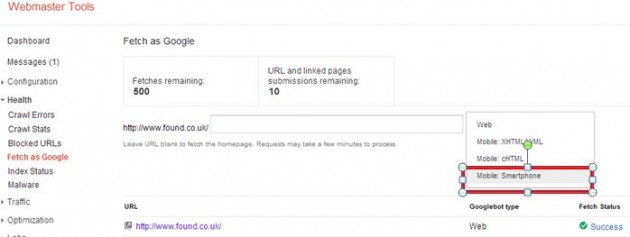
Webmaster tools has several useful features if you are investigating your mobile site. If you have mobile specific content, then test to see if different mobile GoogleBots can fetch your pages ok. This is useful for checking your mobile site setup and investigating any performance issues or poor search results.
Additionally, if you redirect mobile users to specific mobile versions of your URLs, then Mobile Sitemaps can be added in Google Webmaster Tools.
6. Google Sites
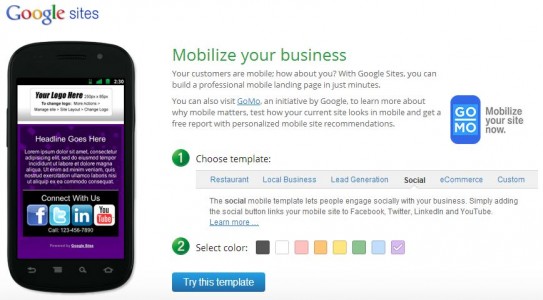
Not got the time or budget to build your own mobile solution? You can quite quickly build a mobile landing page using Google Sites. This could be useful to build a test or mock up and see how it performs. They have different templates for several types of landing pages.
7. Google Mobile Ads
Although not strictly part of organic search, it is worthwhile knowing about some paid search tricks which can also help clients give their mobile campaigns a push.
With a multitude of segmentation options between tablet and mobile phones, you will be missing out on extracting the maximum amount of ROI for your marketing spend if you do not use AdWords. Getting the most from Ads is a whole series of blog posts in themselves but there is a whole host of options Google have developed for mobile devices.
Here are some of the potential methods to look at that can drive traffic to your mobile landing pages using mobile ads:
- Phone numbers in ads using ‘click-to-call’,
- click-to-download
- Mobile Ad Sitelinks
- Seller Ratings
- Location Extensions (Multiple Addresses too!)
- Location Targeting
View the superb Mobile Ads Blog for the latest updates, case studies and examples.
8. Google Analytics
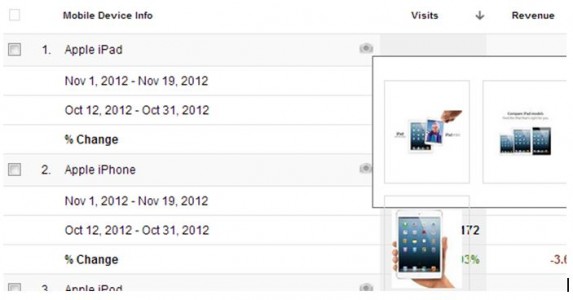
I am sure everyone knows about using Google Analytics and is the most obvious free tool for mobile SEO analysis. At a basic level, understanding Google Analytics will help you to find out how mobile traffic is performing relative to desktop.
You can easily find out which mobile devices are working well, and which may be candidates for optimisation. Is some content getting a lot of mobile traffic but performing relatively badly? Can a page be optimised to generate more phone call leads? Which content drives more local mobile users? It is even possible to hook Analytics up to track downloads of mobile apps.
Although Google also has a set of standard reports just for mobile, it is worth spending some time setting up advanced segments and custom reports so you can see the exact data you need.
I hope that gives you a good overview of Google’s extensive list of free tools that can help with improving your mobile site performance. If you know of more, then please leave a comment and I will try to include it here!
If you’re interested in how Found could supercharge your digital performance across SEO, PPC, Social and Digital PR, then get in touch today to speak to a member of the team.

